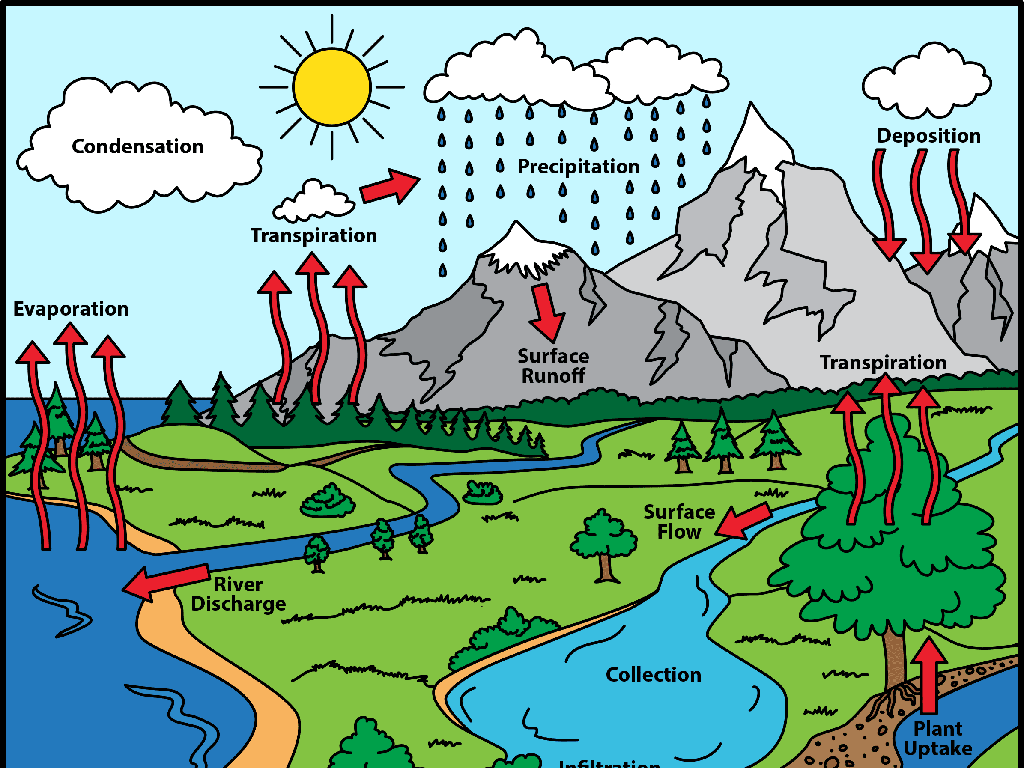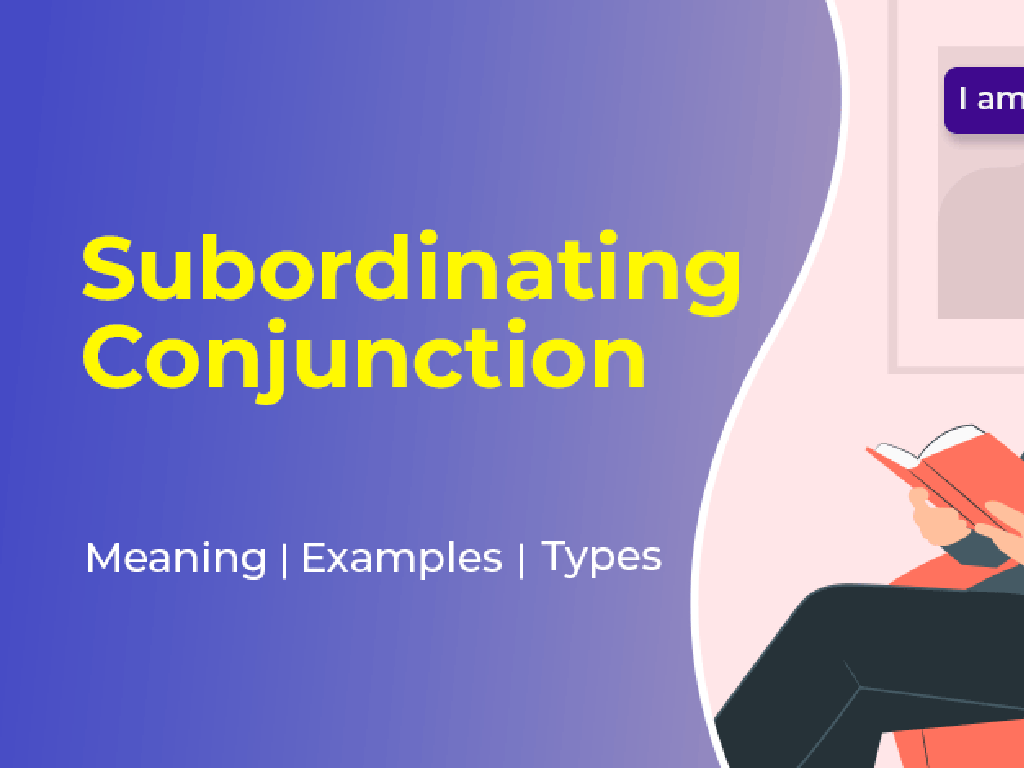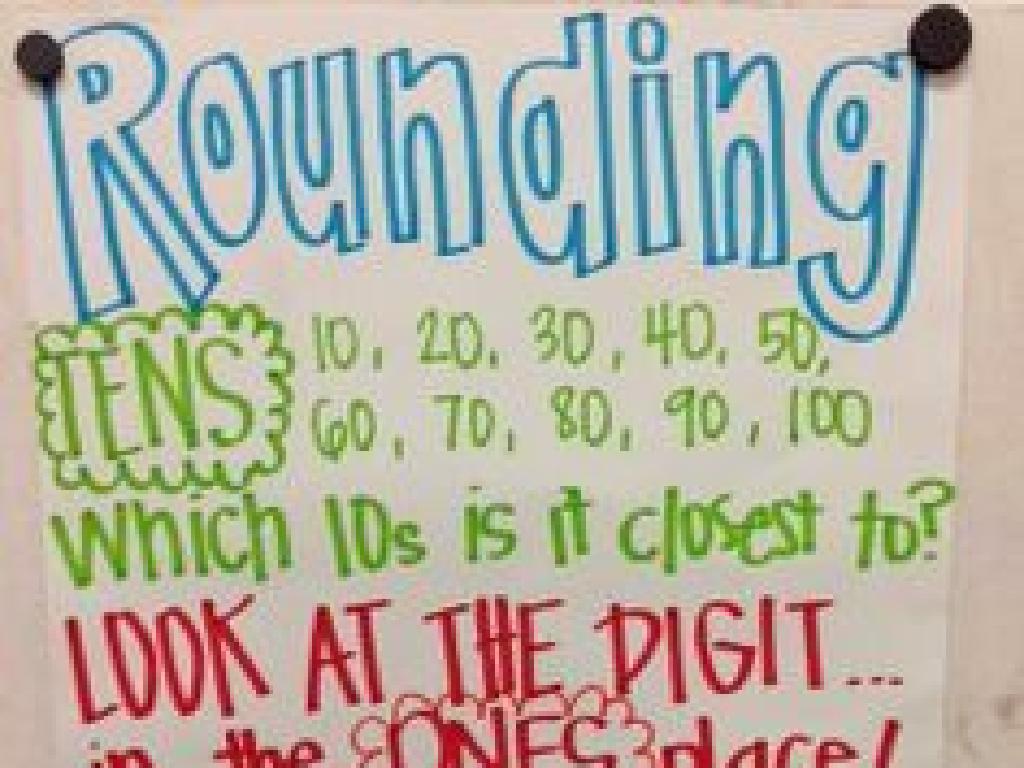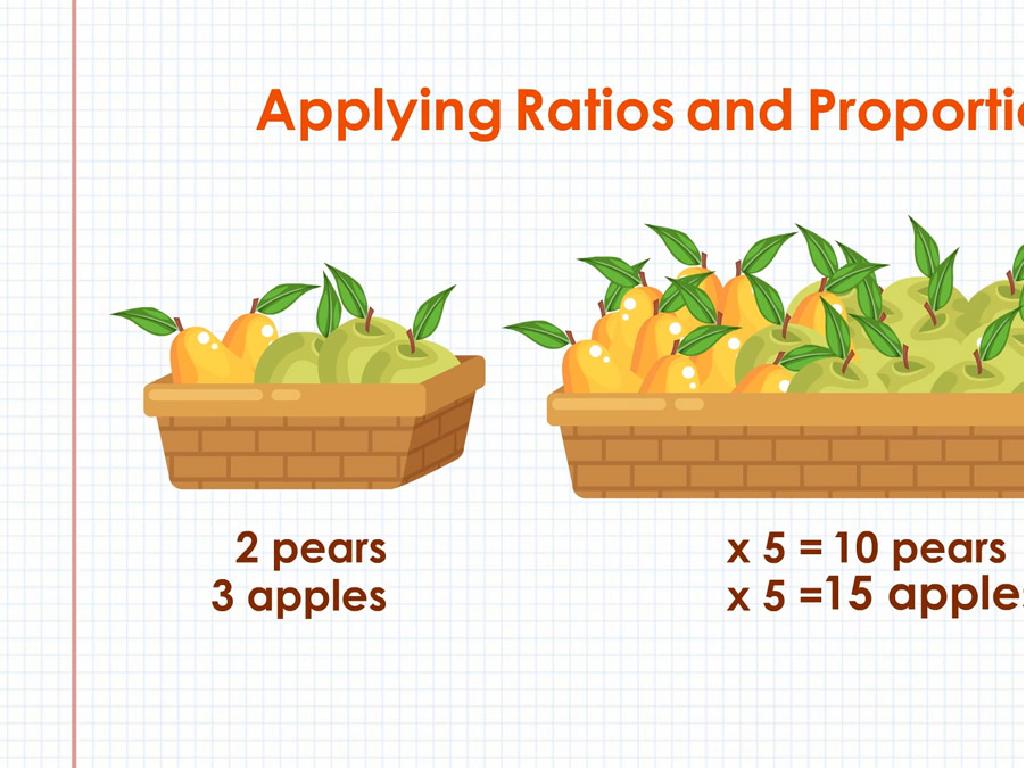Subtract With Cubes - Numbers Up To 10
Subject: Math
Grade: Kindergarten
Topic: Subtraction Up To 10
Please LOG IN to download the presentation. Access is available to registered users only.
View More Content
Welcome to Subtraction with Cubes!
– Greet our little mathematicians
– Today’s lesson: taking away with cubes
– We’ll use colorful cubes to subtract
– Subtraction makes numbers smaller
– If you have 5 cubes and take away 2, you have 3 left
– It’s like a magic number trick
– Watch how numbers change when we subtract
|
This slide is designed to introduce Kindergarten students to the concept of subtraction in a fun and engaging way. Use colorful cubes as visual aids to help them understand the process of taking away. Explain subtraction as a ‘magic trick’ to make the concept more exciting and relatable. Demonstrate with actual cubes, showing that when you take some away, you’re left with fewer. Encourage the children to participate by asking them to predict the number of cubes remaining after some are taken away. This interactive approach will help solidify their understanding of subtraction as they see and perform the actions themselves.
What is Subtraction?
– Subtraction means taking away
– Numbers become smaller
– Imagine blocks being given away
– If you have 10 blocks and give 3 away, how many are left?
– Subtraction with cubes up to 10
– Practice by subtracting cubes from 10 or less
|
This slide introduces the concept of subtraction to Kindergarten students by relating it to a tangible experience with blocks. Subtraction is explained as the process of taking some amount away from a larger group, which results in a smaller number. Use physical cubes to demonstrate this concept, allowing students to visualize the subtraction process. For example, start with a pile of 10 blocks and physically remove some to show how the pile gets smaller. Encourage the students to engage with the material by asking them to imagine having a certain number of blocks and then giving some away. This will help them grasp the concept of subtraction in a fun and interactive way. Prepare to guide them through hands-on activities where they can practice subtracting cubes, ensuring they understand that the number of cubes decreases as they subtract.
Subtracting with Cubes: Hands-On Fun!
– Cubes help us learn subtraction
– Start with 5 cubes, take 2 away
– If you have 5 and remove 2, you have 3 left
– Count how many cubes are left
– After removing cubes, count the remaining to find the answer
– Practice with your own cubes!
– Try it yourself to understand subtraction better
|
This slide introduces the concept of subtraction using a tangible method with cubes, which is ideal for Kindergarten students. Start by explaining that subtraction means taking away. Show them how to physically remove cubes and count what’s left to find the answer. Encourage the students to use their own set of cubes to subtract numbers up to 10. This hands-on activity will help them visualize the subtraction process and understand that the number of items decreases when we subtract. For the activity, provide different subtraction scenarios for the students to solve using their cubes. For example, ‘If you have 7 cubes and take away 4, how many do you have left?’ or ‘Take 3 cubes away from 8 cubes. Count the remaining cubes.’ These exercises will reinforce their understanding of subtraction.
Let’s Practice Subtraction with Cubes!
– I’ll show you a number with cubes
– Together, we’ll take cubes away
– If we start with 5 cubes and take 2 away, how many are left?
– Watch the number get smaller
– Remember, subtraction means less!
– Subtraction is when we take away from a group, and it gets smaller.
|
This slide is designed for a hands-on class activity to help Kindergarten students understand the concept of subtraction using physical cubes. Start by showing the students a specific number of cubes, then physically remove some cubes while the students watch. This visual and interactive method helps them see the result of subtraction. Encourage the students to count along as cubes are removed. Reinforce the concept that subtraction makes the number of items smaller. For the activity, provide different sets of cubes to the students and guide them through several examples, ensuring they grasp the concept of ‘taking away’. Possible activities include: 1) Removing a certain number of cubes from a set, 2) Comparing two sets of cubes after subtraction, 3) Group activities where students take turns subtracting cubes, 4) Using different colored cubes for subtraction to aid visual learning, 5) Story problems involving subtraction with cubes.
Subtracting with Cubes: Numbers up to 10
– Subtraction within 10
– Take away to find what’s left
– Let’s solve examples together
– Example: What is 7 minus 3?
– Using cubes, take 3 from 7 and count
– Use cubes for subtraction
– Cubes help visualize taking away
|
This slide introduces the concept of subtraction using physical cubes to help Kindergarten students understand the process of taking away. Start by explaining that subtraction is simply finding out how many are left when we take some away. Demonstrate on the board with simple examples and encourage participation. For the example 7 minus 3, show 7 cubes and physically remove 3, then count the remaining cubes together. This visual and tactile method helps solidify the concept of subtraction. Prepare to have enough cubes for the class and consider grouping students to work on different subtraction problems together. This hands-on activity will engage the students and make learning subtraction intuitive and fun.
Your Turn to Subtract with Cubes!
– Time to subtract using cubes
– Use cubes for worksheet problems
– Match each problem with a set of cubes
– Count each cube carefully
– Take away cubes to find the answer
– Show your answers to the class
|
This slide is designed to engage Kindergarten students in a hands-on activity to practice subtraction with physical cubes. Provide each student with a set of cubes (up to 10) and a worksheet with subtraction problems. Encourage them to use the cubes to represent the problems visually and to subtract by physically removing the appropriate number of cubes. Remind them to count carefully to ensure accuracy. After completing the problems, students should be prepared to present their answers and explain their process to the class. This activity will help solidify their understanding of subtraction and develop their counting skills. Possible variations of the activity could include pairing students to solve problems together, using different colored cubes for different numbers, or having a subtraction ‘race’ to see who can solve their problems the fastest while still being accurate.
Cube Subtraction Game
– Start with a pile of 10 cubes
– Listen to the number I say
– Remove that many cubes quickly
– If I say ‘2’, take away 2 cubes fast
– Show the remaining cubes to earn a star!
– Be the first to show the right number left
|
This interactive game is designed to help Kindergarten students understand the concept of subtraction in a fun and engaging way. Start by giving each student 10 cubes. Call out a number from 1 to 10, and have the students take away that many cubes from their pile. The first student to correctly show the number of cubes left after subtracting wins a star. This activity not only reinforces the subtraction concept but also helps with number recognition and counting skills. Possible variations of the activity could include using different colored cubes for subtraction, having students work in pairs, or introducing simple subtraction problems for them to solve with the cubes.
Subtraction with Cubes: Review
– Subtraction means taking away
– Like when we have 5 cookies and eat 2, we have 3 left.
– Cubes show subtraction visually
– If we start with 10 blocks and remove 4, we see 6 blocks remain.
– Practice makes subtraction stars
– Let’s be subtraction heroes!
|
This slide is a review of the subtraction concepts we’ve learned using cubes. Start by reminding the students that subtraction is like taking something away, such as when they eat some of their cookies. Show them how we can use cubes to visualize this process by physically removing cubes and counting what’s left. Reinforce the idea that practicing with cubes will help them become ‘super subtraction stars’ and encourage them to feel like heroes as they master this skill. Use simple, relatable examples and ensure that each student has a chance to practice with the cubes. Praise their efforts to build confidence.
Goodbye and Great Subtracting!
– Super subtracting today!
– Practice with cubes at home
– Use your cubes to subtract numbers from 1 to 10
– More number fun next time!
– Keep up the great work!
|
This slide is meant to conclude the subtraction lesson on a positive note, praising the students for their efforts and encouraging them to continue practicing at home. Remind them to use their cubes to subtract numbers up to 10, reinforcing the hands-on learning experience. Highlight the importance of practice in mastering subtraction. Let them know that the next lesson will build on what they’ve learned and introduce more exciting activities with numbers. Provide encouragement and express confidence in their ability to improve their subtraction skills.






